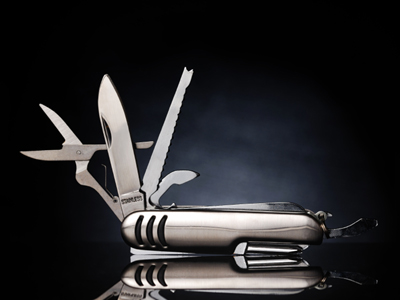
Bonding - Metallic
This is the last of four GCSE Chemistry quizzes on bonding and it looks specifically at metallic bonding. It's difficult to imagine life without metals, we use them in practically every aspect of our lives. Virtually everything involves metals in some way but what makes them so useful? In a word - bonding. The arrangement of their atoms gives metals certain characteristics which are very useful to us. High melting and boiling points, reflection of light, conduction of heat and electricity - these are all properties that we take advantage of in some way.
In metals, the atoms are packed together really closely and this causes some of the outer electrons to break free and float around within the structure of the metal. We say that the electrons are delocalised. Because they have lost electrons, metal atoms are in fact metal ions, but you don't notice this because of the delocalised electrons. Since there are as many delocalised electrons as metal ions, the overall charge is still neutral.
Ready for more?
not all...
quizzers. Try to win a coveted spot on our Hall of Fame Page.







